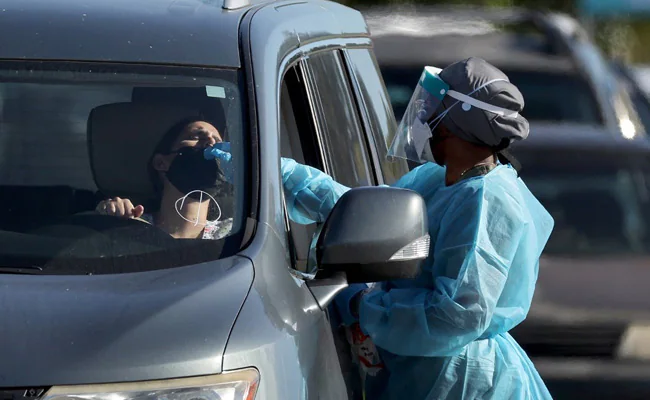The BA.2 and BA.2.12.1 together accounted for an estimated 93 per cent of new COVID-19 cases last week in the US, according to CDC.
The BA.2 sub-variant of Omicron has produced more mutated offshoots, which are gaining foothold in the United States, according to Centers for Disease Control (CDC). While BA.2 still is the dominant variant in the US, BA.2.12.1 now accounts for roughly one in five new cases across the country, the health agency further said.
At least 21 viral offspring of the BA.2 have been reported globally, the CNN reported. But except BA.2.12.1, others have mutations of little significance.
The CDC data shows that BA.2.12.1 causes 19 per cent of the new cases in the US last week, up from 11 per cent case a week before and seven per cent a week before that.
How fast-spreading is the new sub-variant?
The BA.2 and BA.2.12.1 together accounted for an estimated 93 per cent of new COVID-19 cases last week in the US, according to CDC.
The seven-day moving average of US COVID cases stood at 34,972 as of April 16, up 23.4 per cent from a week earlier.
Overall cases have dropped sharply across the US since hitting record levels in January, but COVID-19 infections have been on the rise during the last few weeks, particularly in Northeast states like New York, and Connecticut.
NBC reported that the latest variant is 23 to 27 per cent more transmissible than BA.2. However, there’s currently no evidence to suggest that BA.2.12.1 causes more severe disease, the report further said.
A resurgence in COVID-19 cases in parts of Asia and Europe has raised concerns that another wave could follow in the US.
What differentiates BA.2.12.1 from BA.2?
According to Trevor Bedford, an epidemiologist and genomic scientist at the University of Washington’s School of Public Health, B.2.12.1 has spike mutations S704L and L452Q on top of BA.2 background.
Here, the one to watch just based on mutations is B.2.12.1 which has spike mutations S704L and L452Q on top of BA.2 background. Previously, L452R appeared to have an important role in promoting the spread of Delta and also showed up in Epsilon and Lambda. 6/17— Trevor Bedford (@trvrb) April 18, 2022
He further said on Twitter that previously, L452R appeared to have played an important role in promoting the spread of Delta and also showed up in Epsilon and Lambda.
“We observe a logistic growth rate of 0.06 per day in NY (New York) and 0.11 per day in MA (Massachusetts). This is similar in magnitude to the observed advantage of BA.2 over BA.1,” he said in another tweet.
Warning about new sub-lineages of Omicron
The New York State Department of Health alerted the residents of the city last week about the new sub-lineages, warning that they were spreading about 25 per cent faster than BA.2 and were causing Covid-19 cases and hospitalisations to increase.
It also urged New Yorkers to “act swiftly” to consider wearing masks, to get booster vaccine doses, to get tested if they had symptoms and to seek treatment if infected.

Source : Ndtv.com

